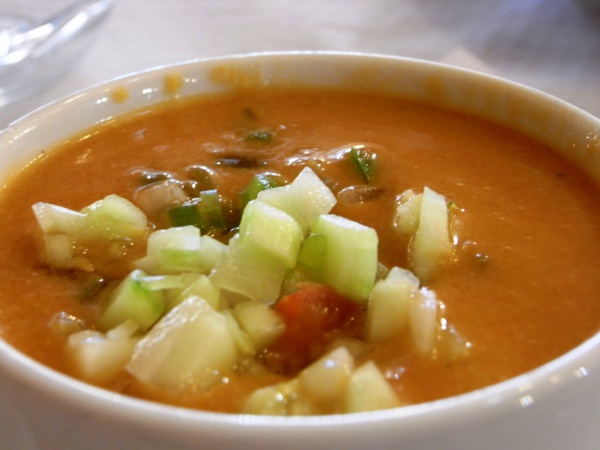Facts About Gazpacho
Gazpacho, often referred to as Andalusian gazpacho, is a refreshing cold soup originating from the southern regions of the Iberian Peninsula, particularly Andalusia in Spain and the Algarve in Portugal. It is a staple of Spanish cuisine, especially cherished during the scorching summer months for its cooling properties.
The classic Andalusian gazpacho recipe is straightforward. It involves blending raw vegetables such as tomatoes, cucumbers, onions, bell peppers, and garlic. To this base, one adds olive oil, wine vinegar, water, salt, and often a bit of stale bread to enhance the texture.
Gazpacho dates back to Roman times when it was a simple soup made with bread, olive oil, water, vinegar, and garlic. Tomatoes were incorporated in the 19th century, giving us the vibrant red gazpacho known today. Over the years, innovative variations have emerged, featuring ingredients like avocados, strawberries, watermelon, grapes, and even seafood. Common garnishes include hard-boiled eggs, ham, almonds, cumin, mint, orange segments, green peppers, onions, tomatoes, and cucumbers.
Different regions and families have created their own versions of gazpacho. In Portugal, a similar dish called arjamolho exists. In Andalusia, variations like porra antequerana, ajoblanco, and salmorejo are popular. Salmorejo is thicker and more like an emulsion than a soup. Interestingly, Gazpacho manchego is a hot meat stew, despite the misleading name.
Across Spain, even more regional adaptations of gazpacho can be found. These include arranque roteño, Extremaduran cojondongo, La Mancha gazpacho, and Castilian gazpacho. These variations might incorporate ingredients such as small game animals, flatbread, garlic, tomatoes, and mushrooms, and can be served as either cold soups or hot stews.

 France
France